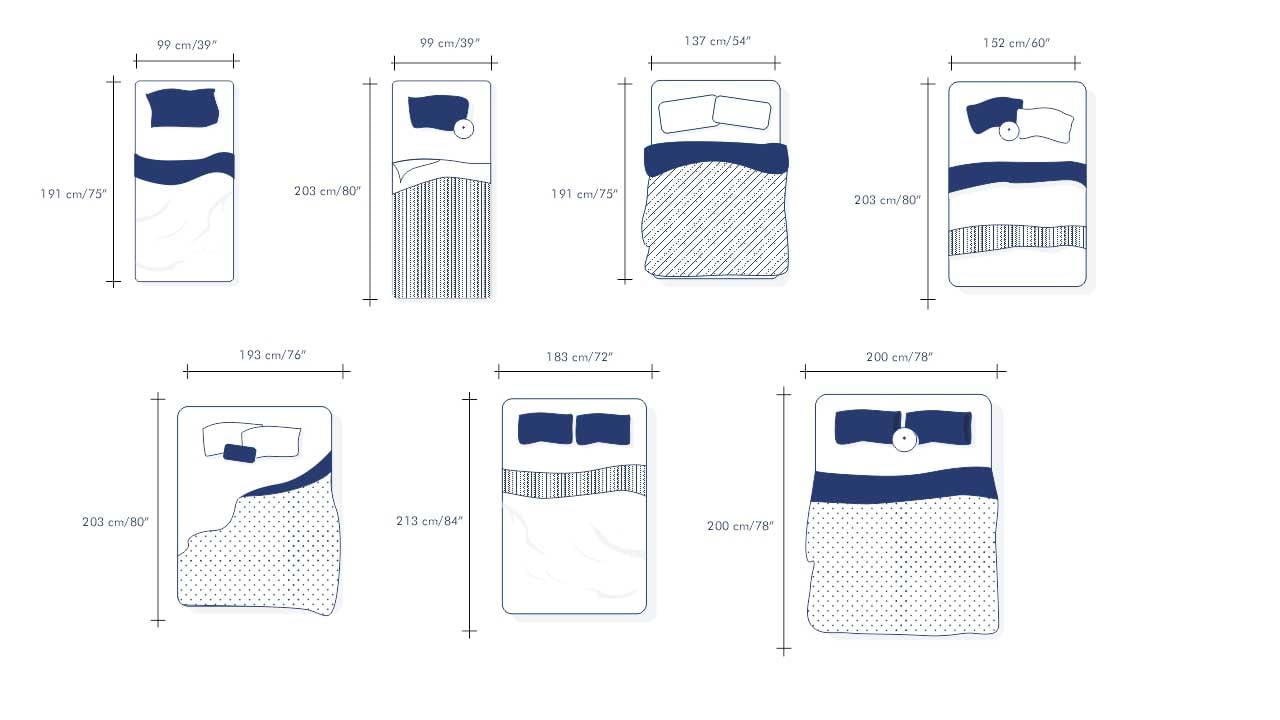Just like the construction of a mattress, its size plays a vital role in determining sleep quality.
Mattress size determines the amount of personal space available while sleeping, body weight distribution, and even factors like motion transfer when sharing a bed. But determining which size is best for your needs can be quite complicated; more so if you share the bed with a partner.
That’s where this guide can help you out.
Standard Bed Sizes
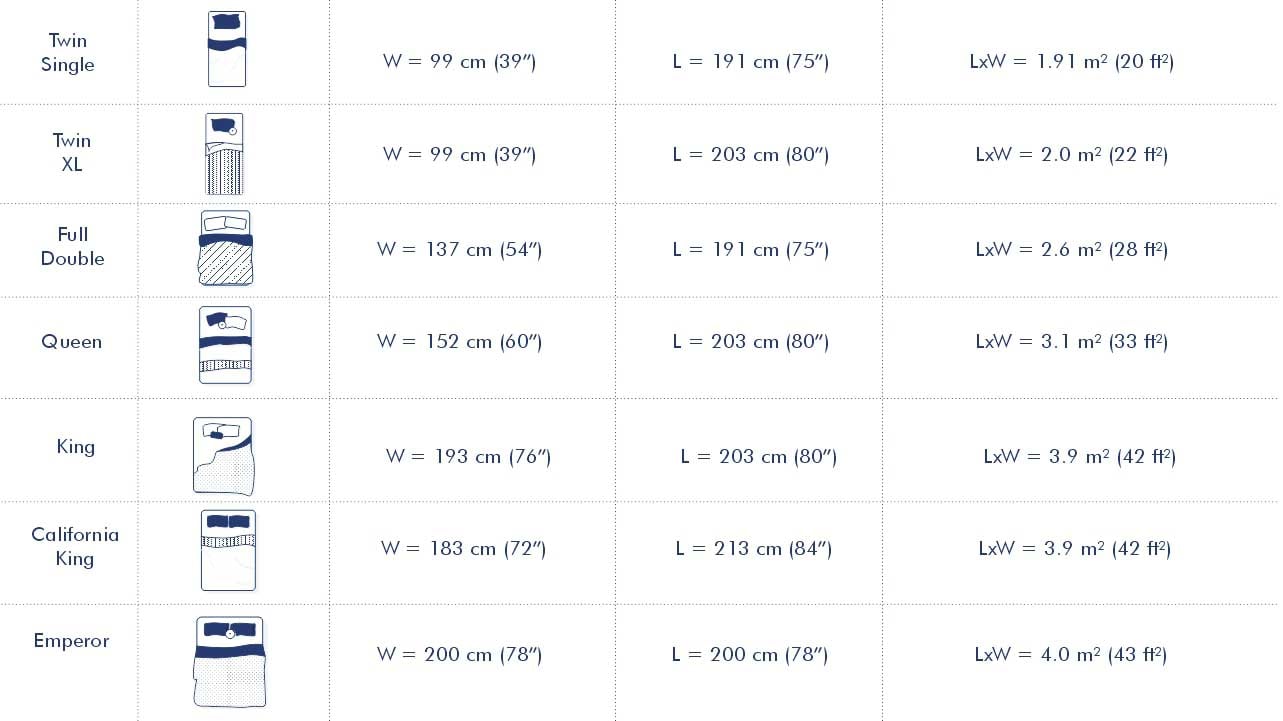
To determine the most suitable bed size, you first need to know the various available sizes. There are generally seven standard bed sizes to choose from, which include:
1. Twin (39 x 75 inches)
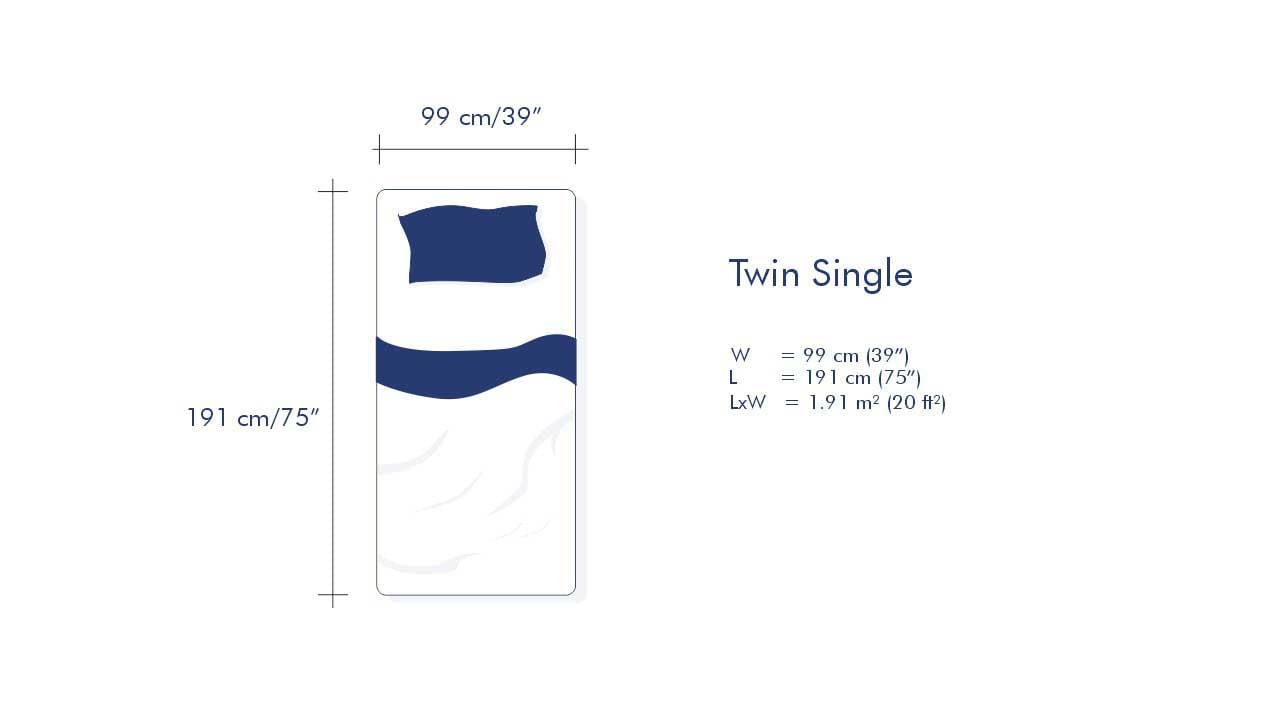
A twin-size mattress is known to be the smallest size available and is ideal for children or teenagers. Such mattresses are not suitable for very tall adults as they are only 75 inches in length, though they can be used by shorter people. Twin-size mattresses are usually best for bunk beds and for people who live alone and have limited space.
In such situations, a twin mattress can help save space as it can be used on a small bed. The small size also means that twin mattresses are the most affordable option on the market.
2. Twin XL (39 x 80 inches)
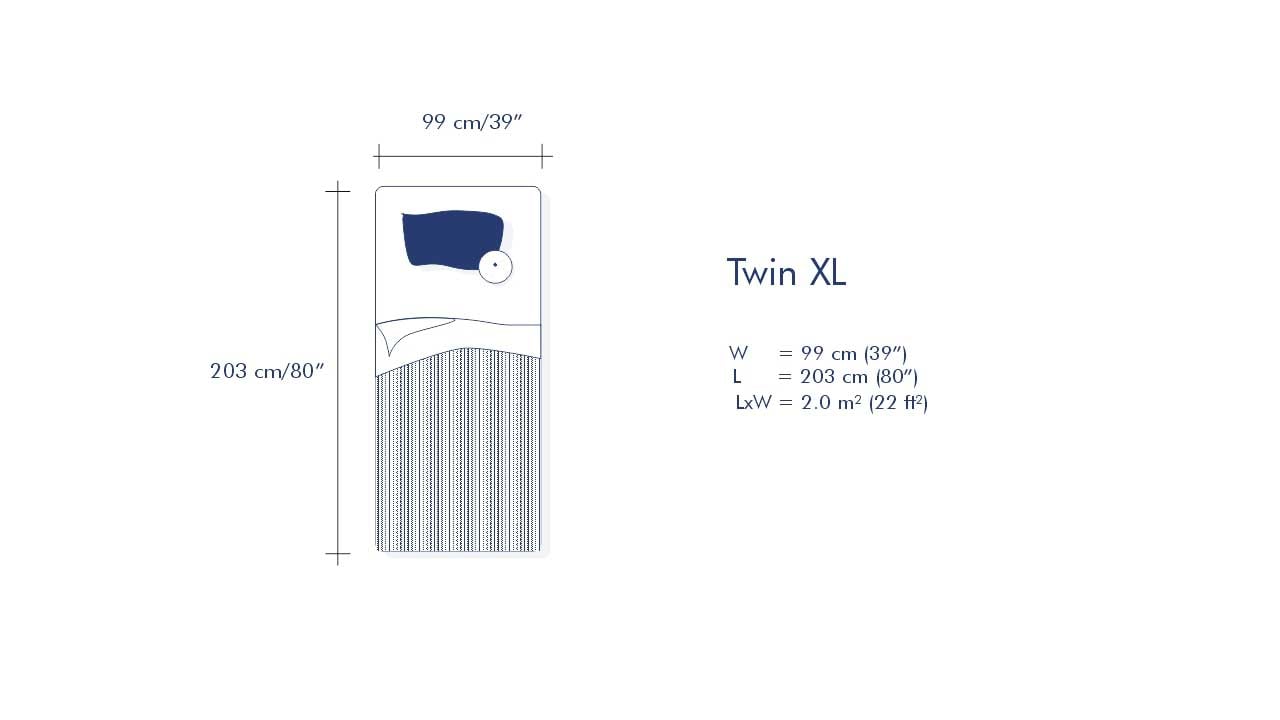
Twin XL mattresses are five inches longer than twin mattresses but have a similar width. This makes them most suitable for teenagers with above-average height and adults living alone and having limited room space. Twin XL mattresses are most common in college dormitories.
Brands often use two twin XL mattresses to make up a split king mattress.
3. Full Double (54 x 75 inches)

A full-size bed is often referred to as a double bed and is generally the best option for young adults. At 54 inches wide and 75 inches long, it is considerably larger than a twin mattress but is more affordable than a queen mattress. Those with average or less-than-average height can sleep comfortably on this bed.
Also, while sharing this mattress with a partner is possible, the limited width may not provide the most comfortable experience. Full mattresses are becoming more popular than twin mattresses, even for teenagers and younger children nowadays.
4. Queen (60 x 80 inches)
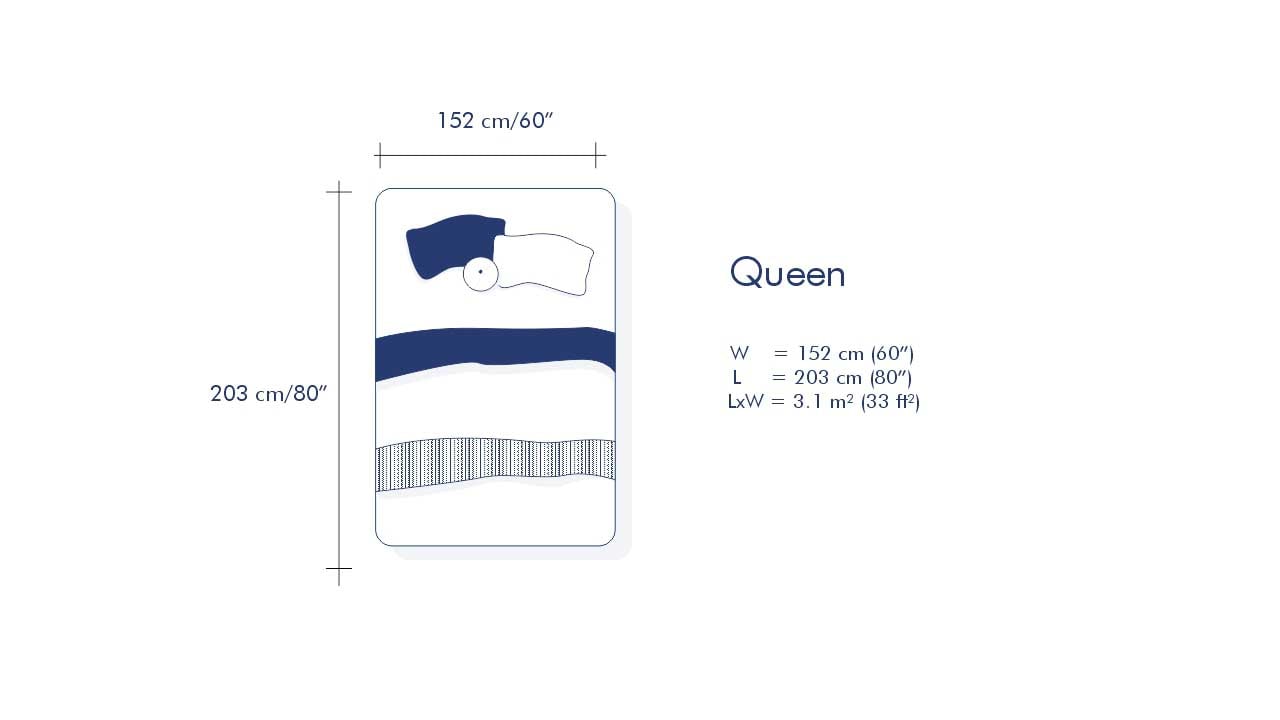
With a width of 60 inches and a height of 80 inches, a queen-size mattress provides adequate space for two people to sleep comfortably. Because of this, it is the most popular bed size for both single people and couples.
Single adults can comfortably stretch out thanks to the additional space, while couples can rest assured that plenty of floor space will be left when using this mattress. Additionally, such beds can be used in guest rooms and smaller bedrooms.
5. King (76 x 80 inches)
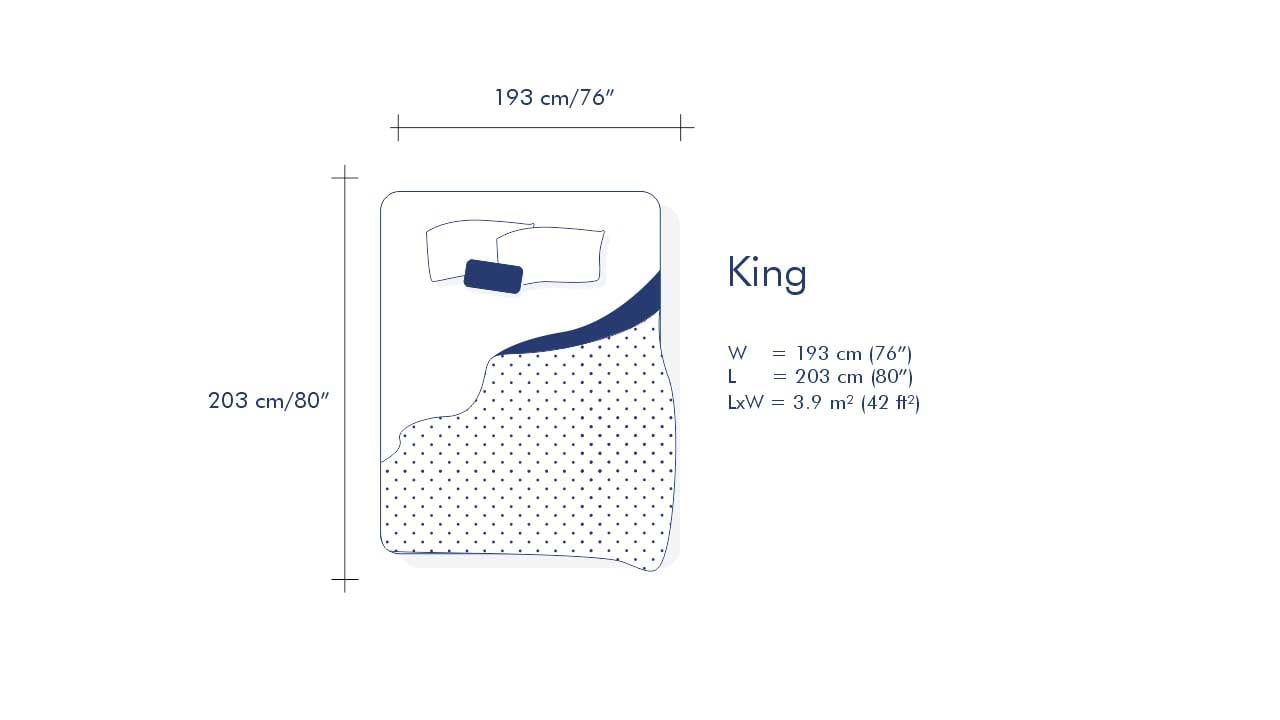
The most commonly available mattress size is the king mattress, which is much wider than a queen mattress but has the same length. This makes it perfect for couples who have a child or a pet sharing the bed with them, as it offers plenty of personal space.
A split king option is also great for people who are easily disturbed by their partner, as it effectively reduces motion transfer. Additionally, split king mattresses allow couples to take advantage of different firmness levels. However, king mattresses can be quite expensive and may not fit smaller bedrooms.
6. California King (72 x 84 inches)
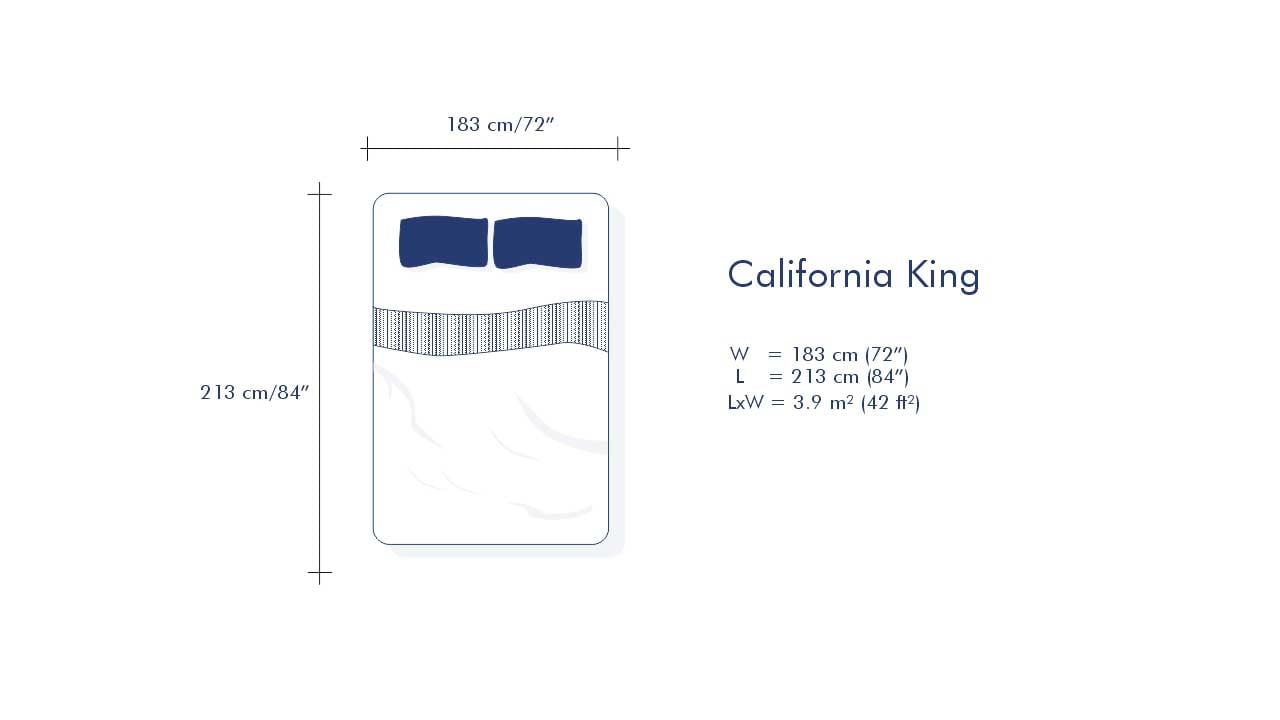
While slightly narrower than a regular king mattress, a California king mattress is the longest option and is well-suited for people with considerable height. It can also be a great fit for couples who need additional space for a child or a pet.
Being an extremely large mattress, a California king bed can only be used in an extremely large room and is not compatible with regular king bed sheets. It is also quite costly, which is why it may not be the perfect option for everyone.
6. Emperor (78 x 78 inches)
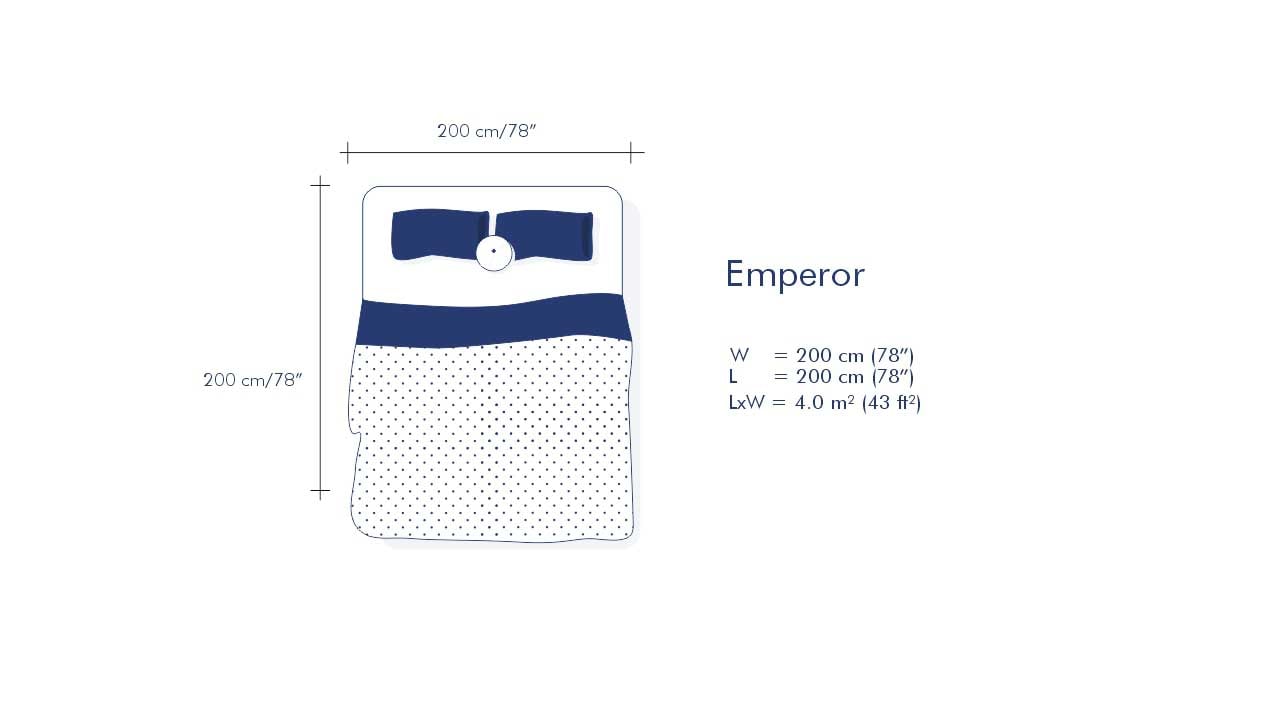
Among the larger options available in bed sizes, the Emperor size stands out. Mostly prevalent in the UK, the typical dimensions of an Emperor bed are approximately 78″ x 78″ or 200cm x 200cm. These dimensions offer ample space, providing customers with a spacious sleep solution that promotes ultimate comfort.
Exceptionally, certain retailers have adapted the standard dimensions to create an even larger Emperor size, with their versions stretching to 215cm x 215cm or 84″ x 84″. This distinctive size is parallel to that of a Wyoming King size mattress often found in the United States. Despite the difference in nomenclature, the purchaser enjoys an equally generous sleeping area with both variations.
This size choice can be particularly beneficial for taller individuals or those wanting more sprawling space, enhancing their sleep quality by minimizing disruptions due to lack of room.
Custom Sizes
Apart from these seven standard bed sizes, many brands offer custom-size mattresses for different requirements. Such mattresses can be constructed in almost any size and shape and may not be as costly as king or California king mattresses.
That said, depending on their construction and other factors, they may not be as economical as smaller mattresses, like a twin or twin XL. Another thing to remember is that with custom-made options, you will need custom sheets and other accessories, as standard ones will not fit properly.
Selecting The Right Size Bed
When choosing between various bed sizes, the first thing to consider is the height of the tallest person who will be using the mattress. The mattress should be at least six inches longer than its height. Generally, the ideal bed sizes for people with different heights are as follows:
- Under 5’9″ – Twin or Full
- Under 6’2″ – Twin XL, Queen, King
- Under 6’6″ – California King
Additionally, if you intend to share the mattress with a partner, pay attention to its width. It should be wide enough to allow both people to lie with their hands behind their heads comfortably when sleeping on their backs.
Mattress Thickness Vs Mattress Size
People often get confused between mattress size and thickness, but the two are completely different things. Mattresses having the same size can have significant variations in their thickness. For instance, full mattresses may have a thickness ranging from 5 to 16 inches.
The important thing to keep in mind is that there isn’t any established standard that can determine mattress thicknesses. But most brands categorize their mattresses based on their thickness in the following manner:
- Low profile – 2 to 5 inches
- Slim – 5 to 8 inches
- Standard – 8 to 12 inches
- Tall, thick, or deep – 12 to 16 inches
- Extra tall, extra thick, or extra deep – Over 16 inches
Ideally, how thick a mattress you should opt for depends on your body weight. Heavier people require greater support, which means a thicker mattress might be best for them.
Choosing The Right Mattress
Knowing about the various bed sizes can be helpful when choosing an option. However, before doing so, it is crucial to measure your bedroom where the mattress is to be used.
Mapping Out Your Bedroom
Personal preferences aside, selecting a mattress that can fit comfortably in your room while leaving adequate space to move around is essential. In some situations, pushing the bed against a wall may be possible, though it may be inconvenient if two people are using the bed. Getting into and out of bed can become cumbersome for the person sleeping next to the wall.
1. Measure The Bed
To measure the bed, first, take measurements of the bed frame, including the headboard. Depending on the type of bed, taking measurements can require some time and effort, which is why it is a good idea to use painter’s tape. This tape can be used to mark the spot on the floor where the bed will be placed and can be especially useful for tight or irregularly-shaped areas.
2. Leave Some Clearance
When planning where to place the bed, make sure there is at least two to three feet of space on the sides and the foot of the bed. This is generally easier to do with bunk beds since these are stacked one on top of another, leaving plenty of space to walk around. Providing some clearance space also offers several other benefits.
It makes opening dressers and closets close to the bed easy, allows using nightstands, and makes for an aesthetically pleasing appearance by preventing cramping. And making your bed is easier when you can walk around it.
3. Consider Alternatives
Sometimes, especially in the case of smaller bedrooms, it may not be possible to leave out some clearance room. And installing the bed you picked may give the room a claustrophobic or cluttered feel.
To avoid that, consider selecting a smaller mattress size or opting for a platform bed instead of a panel bed. Platform beds help you store items easily and can reduce the need for a dresser or closet.
4. Take The Mattress Depth Into Account
The mattress depth should also be taken into account in relation to the room where it will be used. It will help determine the size of the bedding needed, and ideally, the depth should be around 14 inches. This is the most common size for which you can easily get sheets and linens.
Opting for a non-standard or custom size will lead to a rise in the overall cost as you will need custom-made sheets.
Factors To Consider When Selecting A Mattress
After taking the required measurements, it is time to pick a mattress that can ensure good quality sleep. To do that, you need to consider a few factors that are mentioned here.
1. Size Of The Person Using The Mattress
As mentioned before, a mattress should be larger than the tallest person sleeping on it. A standard full-size or twin-size may not be suitable for people with a height greater than six feet and two inches. Smaller mattresses are best suited for teenagers and children but can work for adults with less than average height.
Similarly, consider the person’s width, as people with a wider build require a queen or full-size bed for comfortable sleep.
2. Number Of People Using The Mattress
Another factor to take into account is whether you will be sharing the mattress with a partner or sleeping alone. Similarly, you will need to take into account whether a child or a pet will be sleeping on the mattress. For such requirements, larger mattresses like the California king or king options might be excellent picks.
On the other hand, if you sleep alone, twin XL, full, or queen-size mattresses will do just fine.
3. Size Of The Room
The area of a room can be calculated by multiplying its length and breadth, but doing so may not be very simple if the room has an irregular shape. In such cases, the space will need to be divided into multiple sections, and each area will have to be added to get the total.
Once the area is known, it is possible to estimate the space available for the bed and how much will be left after it has been put in place. It will help determine how large a bed can be placed within while leaving some walking room. Avoid using an extremely large mattress in a small room, as that can reduce the free space available.
On the flip side, using a tiny bed in a spacious bedroom may cause the room to appear vacant.
4. Location Of The Room
The location of the room determines accessibility, and getting a larger mattress into a room that is not easily accessible can be challenging. This may be the case if the door to the room is quite small. Or it may be that the room is present on an upper floor and can only be reached through a narrow staircase.
A bed-in-a-box style mattress might be the best option to deal with such problems since it comes in a small box. This can be easily carried to the room and unpacked, where the mattress can then expand to reach its full size.
5. Cost
A larger mattress will cost more than a smaller one, but a pricier option does not always guarantee a better sleeping experience. For instance, a mattress designed for a queen bed frame is not as costly as one designed for a king-size bed. But in many cases, it is a better option and can be used by couples while providing space for children and pets.
Also, keep in mind that the cost depends on several other factors as well, such as the brand, construction, warranty, etc.
Conclusion
Choosing the right bed size and mattress is crucial when decorating your room for a good night’s sleep. By knowing about the seven standard options, the process of selecting the most appropriate mattress can be simplified to a certain extent.
The important thing to keep in mind is to consider factors like personal space, the number of people using the mattress, and motion isolation when choosing a mattress. That said, sometimes the standard sizes may not be suitable, and you may need custom-made options.
While these can help enhance your sleep quality, finding accessories like sheets for such options can be quite difficult. So, consider the pros and cons of various options before making a decision.



